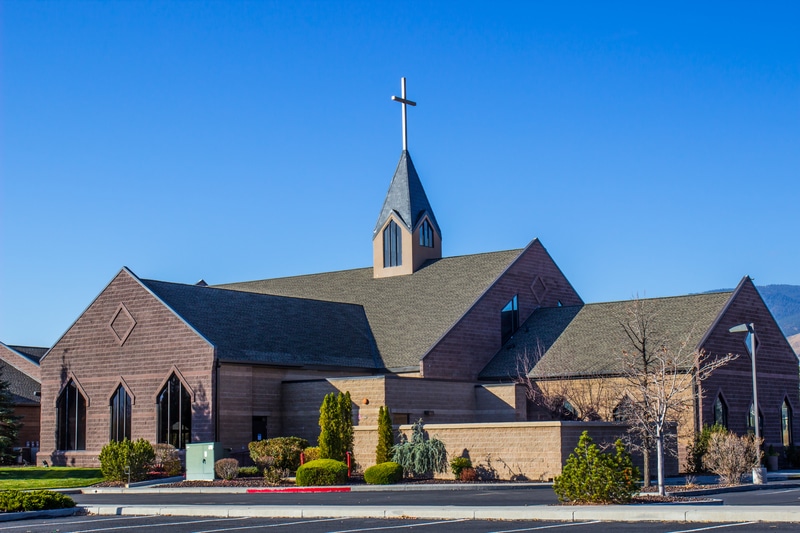By Renn Salo
Along with other organizations across the country, churches have been flipped upside down in recent weeks. Aside from the most evident need to make church virtual and keep members connected, church leaders find themselves facing unprecedented hurdles to which they are learning to respond.
These challenges are affecting various churches in different ways, but a new survey from church technology company Faithlife shows that most congregations will likely experience challenges in one of three ways in the coming weeks as we continue to battle COVID-19.
1. A Decline in Giving
As seen in the results from Faithlife’s survey, many churches without an online giving solution experienced a drastic decrease when social distancing and shelter-in-place orders began to take widespread effect in March 2020. Considering that 80% of giving across churches happens via in-person methods such as passing the plate, a majority of church members who give regularly are being asked to quickly adapt to virtual giving methods, and churches are bearing the brunt of this sudden change. For instance, starting the week of March 15, 21% of churches without online giving systems experienced a 10–50% decrease in giving and 25% saw a decline of 50% or more.
However, the same survey showed promising futures for churches with integrated online giving platforms. 42% of churches surveyed that have an online giving solution experienced typical or slightly increased amounts of giving during those same weeks at the start of COVID-19.
It’s important to note that weekly gifts for churches vary even when there is not a pandemic, so it is more helpful to examine monthly totals. Because of this, the Faithlife survey examined how monthly giving among participating churches has shifted throughout recent months as it relates to coronavirus.
Results showed that churches with an online giving platform were more protected from severe drops in giving (>50% drop) than churches with no online giving platform, while 4% of churches without an online giving platform saw a 50% decrease or greater in total monthly gifts in March. Because shutdowns started mid-March, monthly totals are still being accumulated, but these results gathered from last month remain pertinent indicators of how giving could be going.
The evidence is clear that churches with online giving platforms see a more steady level of financial gifting. So, churches experiencing a struggle to see gifts stay steady can look into online giving options and seek to educate the congregation as much as possible on not only how to give online, but why it is important that they continue to do so.
2. Increased Levels of Stress Among Church Leadership
The same survey found that, as time goes by, more and more church leaders are feeling less prepared to effectively minister to their communities amid this pandemic. Less than half of the survey participants reported that they still feel equipped, whereas more than 50% of those surveyed said they are feeling either completely unprepared, fairly concerned or somewhat nervous when it comes to conducting ministry during this unprecedented season.
Many pastors have never faced a tragedy so expansive as the one currently plaguing our nation and most of the world. Thinking about all the young, first-year and newly-planted church pastors, it is easy to understand how the daily changing landscape of church and life may be daunting or even discouraging. Now more than ever, people are looking to churches to encourage them and direct them on how to help. This mounting pressure combined with the technical difficulties of doing church virtually and keeping members encouraged and engaged is understandably burdensome to many.
In addition to thanking and serving our medical professionals and other essential workers, we can come alongside our pastors and church leaders with prayer and encouragement to help them through these trying times. A simple “thank you” message can go a long way.
3. A Waning Interest Among Congregants
During the first couple of weeks of sheltering-in-place, the encouraging videos circulating social media of families worshipping in their living rooms and live streaming sermons were rampant. The novelty of the non-optional virtual church felt fresh, but that excitement is slowing. As people are stuck in their homes for the majority of the time, motivation, even if it just to tune into Sunday service, can quickly decline. As a result, in addition to the typical struggle pastors face of keeping congregations engaged in-person, they are now tasked with reaching an unseen audience that may be feeling equally discouraged. To counter this problem, church members need to encourage themselves and one another that they are the Church and should continue to show up as a Church as the Bible commands us to do, even if that looks a different now than it once did.
Preparing for the Future
It’s important to recognize during these difficult days that churches and their leaders are not unaffected by the ramifications of COVID-19. While much of the world is, thankfully, looking to the global Church for an encouraging example, it’s vital that those part of the Church press on and continue to run with endurance the race God has laid out for us.
On the other hand, in addition to adapting spiritually, churches must acclimate practically to the new norms as well. Truthfully, it is unlikely that the landscape of life, including church, will ever return back to completely “normal.” The way churches have been conducting operations and outreach throughout COVID-19 will likely continue to influence how church is done for years to come. Now is the time to embrace new habits.
Simple steps such as integrating online giving platforms and finding a live streaming service can take the pressure off of church leaders and streamline sites for congregants who are learning to navigate virtual church. If your church has yet to incorporate third-party technology platforms and services to maximize online operations and outreach, it is never too late to do so.
Renn Salo is product manager for Faithlife Giving, a product of Faithlife, which uses technology to equip the Church to grow in the light of the Bible and offers 14 products and services for churches, including Logos Bible Software.















